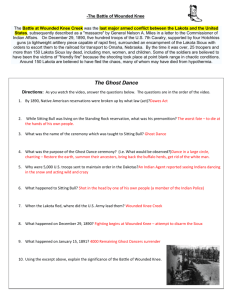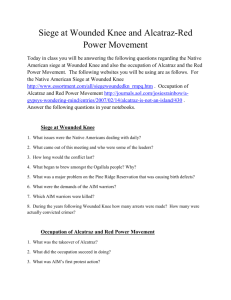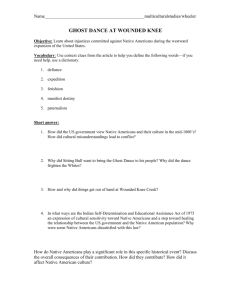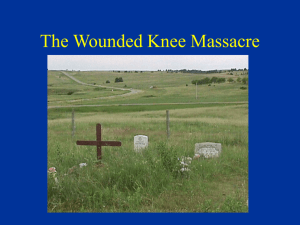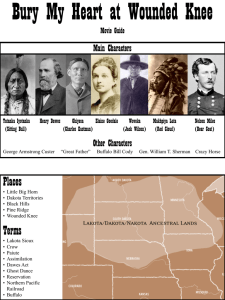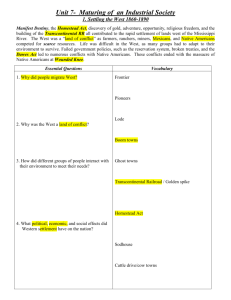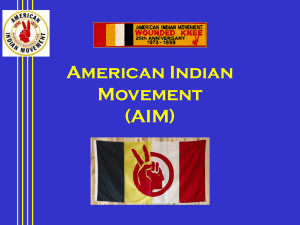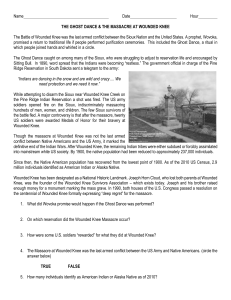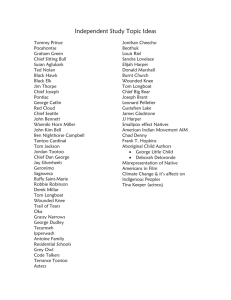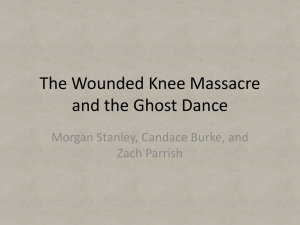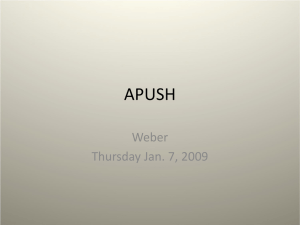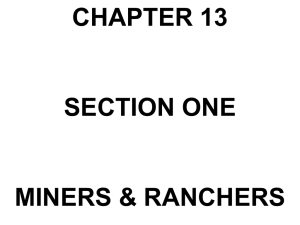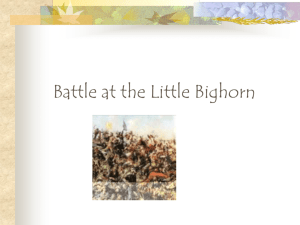Chapter 6 - Taft College
advertisement
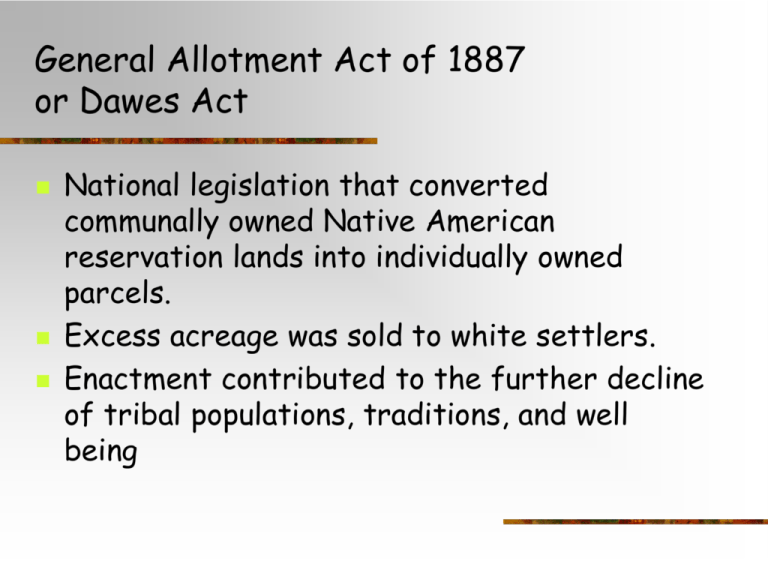
General Allotment Act of 1887 or Dawes Act National legislation that converted communally owned Native American reservation lands into individually owned parcels. Excess acreage was sold to white settlers. Enactment contributed to the further decline of tribal populations, traditions, and well being The Dawes Act: The Plan The new plan to rescue Native Americans from extinction called for an aggressive assault on tribalism by parceling out communally owned reservation land on a severalty (individual) basis. Hundreds of thousands of acres remaining after the individual 160-acre allotments had been made were then sold at bargain prices to land-hungry or land-speculating whites. The Dawes Act: Consequences This allotment, designed to absorb the Native Americans into the society of the United States, turned out to be a monumental disaster. In addition to losing their “surplus” tribal land, many Native Americans families lost their allotted land as well, despite the government’s 25-year period of trusteeship. The poorest of the nation’s poor—many of them now landless and the majority still resisting assimilation—Native Americans reached their lowest population numbers shortly after the turn of the 20th century. In June 1924 the U.S. Congress granted these original Americans United States citizenship. Wounded Knee and the Ghost Dance Late 1880s the Sioux began practicing a religion taught by Wovoka, a Paiute prophet who promised that performing the ritual ghost dance would result in the return of native lands, the rise of dead ancestors, the disappearance of the whites, and a future of eternal peace and prosperity. Nearby white settlers, frightened by the rituals, called for federal intervention. The U.S. Army believed Chief Sitting Bull to be the instigator of an impending rebellion, and he was arrested in December 1890. Wounded Knee and Sitting Bull As Sitting Bull was being led away over the objections of his supporters, a gunfight erupted. Thirteen people, including Sitting Bull, were killed. His followers then fled, some to the camp of Chief Big Foot. The 7th Cavalry pursued the Sioux to an encampment near Wounded Knee Creek. Wounded Knee Massacre, 1890 On December 29, 1890, a shot was fired within the camp and the army began shooting. Accounts of the precise events and the death toll vary considerably but it is likely that the soldiers killed between 150 and 370 Sioux men, women, and children, the great majority of whom were unarmed bystanders. Thirty-one U.S. soldiers were killed in action, many of them from fire by their own troops. AIM: American Indian Movement Began 1968/69 Part of Red Power Movement Coincided with Black Power Movement Less about passive resistance and more about aggressive confrontation of govt. Very politically active Cultural movement as well as political Occupation of Alcatraz Young Indian activists wanted to make a statement about the treatment of American Indians by the U.S. government. “Termination and relocation” policies took people off their homelands, moved them to major urban areas and then cut them loose on receipt of their first paycheck. Ancestral land was appropriated by the federal government in an attempt to assimilate Indians into American society. Much of the tribal land was taken over and sold to private citizens or corporations, angering many American Indians. Since Alcatraz, which was unused federal land, had been declared “abandoned,” a group of activists from the American-Indian Movement (AIM) claimed it as Indian land. As many as 90 people lived on the island for 19 months. Damage to the lighthouse gave the federal government an excuse to storm the island and forcible remove them. The most important result of the occupation was that President Nixon, after much lobbying by Leonard Garment, ended the termination and relocation policies, and established self-determination on Indian lands. This poster appeared in Berkeley, California the morning after the Alcatraz removal. Hoka Hay roughly translates into, “It’s over”. Source: http://www.pbs.org/itvs/alcatrazisnotani sland/nativeland.html Wounded Knee, 1973 The second incident started on February 27, 1973, when armed supporters of the American Indian Movement (AIM) seized and held Wounded Knee, demanding a U.S. Senate investigation of Native American problems. Federal law enforcement officers were sent to the site, and during gunfire exchanges, two Native Americans were killed and several people on both sides were injured. Wounded Knee: Similar Consequences The siege ended 70 days later, when the Native Americans were promised that negotiations concerning their grievances would be considered. After one meeting with White House representatives and a promise of a second one, the Native Americans were informed that their treaty grievances should be referred to Congress. No further meetings took place. In-Class Exercise Using your text and lecture, create a timeline of Native American MinorityDominant Relations noting legal, social and economic changes. (At least 10 items with full descriptions of the event.)
